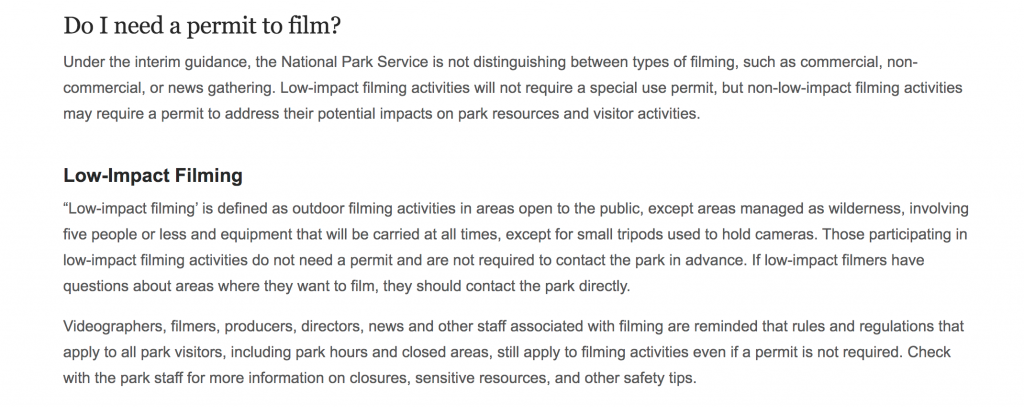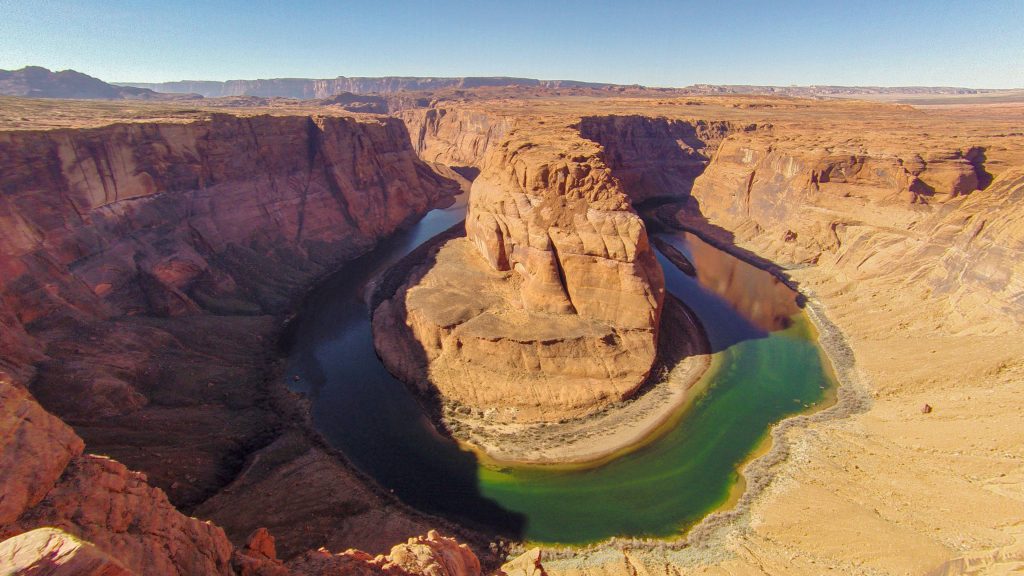Rules for Flying Your Drone in National Parks and National Forests, and Resources to Help You Determine Where to Fly
Can You Fly Your Drone in a National Park?
Thinking of grabbing some awesome drone footage at the Grand Canyon this weekend? The lure is understandable — there is nothing better than capturing nature in its finest glory from high up in the sky. Unfortunately, you cannot put your plan into action. National Parks were classified as “no drone” zones in 2014. And flying here means stiff penalties. For drone pilots, this is a huge missed opportunity — the NPS controls some 417 parks, 23 trails, and 60 rivers.
“It’s very broad in that it sweeps in every national park-controlled location, including things like beaches and forests where there really aren’t the same sensitivities to noise, and where model airplanes have been allowed for decades”. ~ Brendan Schulman, DJI.
According to Policy Memorandum 14–05 issued by the NPS on June 19, 2014,
![]()

In order to fly your drone in a national park, you will need a Special Use Permit. This permit can be issued only for uses such as search and rescue, research and fire safety. However, it is nearly impossible to procure this permit. As there was a recent supreme court cases that stated NPS cannot charge visitors for Photography and/or special use permits. To clarify, special use permits are still in affect, they simply do not charge fees for them anymore.
And, if you are caught flying without your permit, National Park service rangers have the authority to confiscate your gear. Not to mention the maximum penalty which can be as severe as six months in jail and a $5,000 fine. It is ironic that while procuring a permit to fly in a National Park is almost impossible, the NPS can themselves fly drones in a National Park. NPS now states:

That said, there are particular areas of National Parks that you really shouldn’t fly. For example, there are areas of the grand canyon that have heavy air traffic. Tourists fly down the canyon and land for a lunch. Avoid special use areas that are marked on sectional (airspace) maps.
The only way to fly in a national park is to take off and land from outside the national park. You cannot operate a drone from a national park, you can only operate it from outside. NPS’s website reiterates that pilots must fly Line of Sight according to the FAA, but without a formal and technical definition of Line of Sight, it is open to interpretation.
Is the Drone Ban in National Parks Justified?
I was surprised to learn that while battery-powered and environment-friendly drones are disallowed in National Parks, noisy ORV’s (Off Road Vehicles) are not a problem. Sand buggies and ATV’s are classified as ORV’s. A lot of states have put the 96 dB rule for ATV’s into effect. It means that an ATV cannot be louder than 96 dB. Now, drones are less noisy compared to ATV’s. The Phantom 4, for instance is not louder than 70 dB when it is 6 m away. And, if you are flying your drone at 100–150 feet, you can expect significantly less noise pollution. The recently launched Phantom 4 V2 is known to be much quieter than its predecessors. According to the NPS website, ORV’s pose other dangers too. Fluids leaked from ORV’s can, for instance, poison fish and other animals. ORV’s can also destroy plants and beach dunes.
Economically also, it would make a lot of sense for national parks to permit drones to fly in the national airspace. As of FY 2017, the NPS has estimated that $11.6 billion is required for backlogged maintenance. Certainly, allowing drones to fly can be a good source of revenue, even if NPS cannot charge for photography permits.
Pro Tip — Often, drone pilots, failing to realize that they are in a National Park, end up flouting the law. You do not want to be that guy. Check your airspace, and know where the Park boundaries are. Often times there are many cool places to fly outside of the popular areas. Make sure to watch the Operations course to learn how to take off clandestinely.
So, You Can’t Fly in National Parks. What About National Forests?
Fortunately, it is possible for drone pilots to fly in national forests. Unlike National Parks (which are controlled by the Department of Interior), the National Forests fall under USDA’s (US Department of Agriculture) domain. The following excerpt clarifies USDA’s stance on commercial filming and photography permits –
“To further help differentiate between journalism and other activities, the following question should be asked. Is the primary purpose to inform the public, or is it to sell a product at a profit? If the primary purpose is to inform the public, no permit is required and no fee is assessed. I also want to emphasize that commercial photography only requires a permit if the photography takes place at locations where members of the public are not allowed or uses models, sets or props. Commercial photography and landing fees should be primarily viewed as land use fees. If the activity presents no more impact on the land than that of the general public, then it shall be exempt from permit requirements”. ~ Thomas Tidwell, 17th Chief, United States Forest Service
So, some key takeaways from the above excerpt –
1. If the primary purpose is to inform and educate, a permit is not required.
2. If the activity presents no more impact on land than that of the general public, a permit is not required
However, the USDA has strict rules about where you can fly and where you cannot fly. For instance, you CANNOT fly in wilderness areas. Nor can you fly near campgrounds and trails (in order to comply with the “flying over people” rule). And you definitely cannot fly near a wildfire.
Always remember to check for TFR’s when flying in a National Forest. In order to check for any existing TFR’s, we recommend checking out Tfr.faa.gov rather than any of the other Apps. It is always better to go to the main source than rely on apps which may/may not contain updated information. Finally, always talk to enforcement officers with respect. If you want to receive respect, you have to give respect in return.
Stay Tuned, and Fly Safe!






Add Your Comment